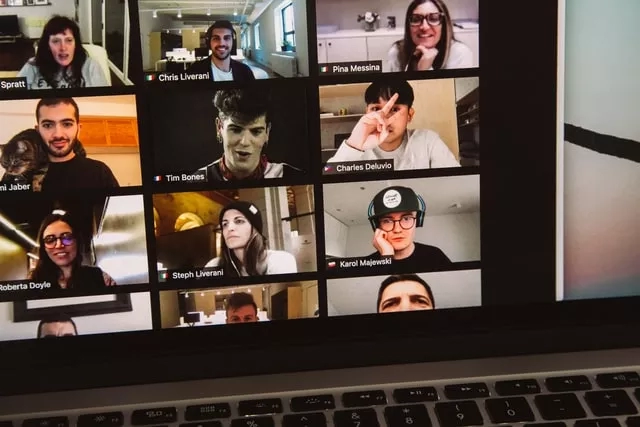The global health crisis has forced organisations to convert their in-person events to virtual events almost overnight. Event planners are witnessing drastic changes in the way they plan events, travel budgets are down, venue capacities are limited, and the audience mix has shifted. Since the show must go on, event management has taken the online route to work with these new restrictions.
While we all still believe in the power of face-to-face interaction, it is unlikely that events will immediately transition from virtual to in-person overnight. It is more likely that hybrid events will become more common even as the industry moves towards getting in-person events back.
Hybrid events combine both in-person and virtual experiences, offering the best of both worlds to planners and attendees alike. When done correctly, a hybrid event can broaden your audience and exposure, offer an international perspective, and provide a richer experience for everyone involved.
However, while the term ‘hybrid event’ may be new to many, the combined in-person and virtual event is not a new concept. There are a lot of misconceptions circulating in the industry about what this event format entails and how to plan them. Here’s a handful of the most common myths about hybrid events.
Misconception 1: The virtual element of a hybrid event is simply a livestream
By the simplest definition, hybrid events are a mix of live and virtual events, so it’s not surprising that many continue to have this misconception. However, just recording your event and streaming it live to an audience isn’t enough to call it a hybrid event. The key distinguishing factor between a mere livestream and a hybrid event is that the latter involves audience participation and engagement from both in-person as well as virtual attendees.
Engagement is the key ingredient here – it is what differentiates hybrid events from any live event that is made accessible digitally. When you make your event hybrid, your attendees wouldn’t just be watching it. They will be actively participating in the event as well, either by offering feedback in real time or interacting with other attendees/elements of your event via their mobile devices or their computer.
Misconception 2: The virtual extension of your events will hurt your in-person attendance
The meetings and events industry has reached a point where the virtual experience is considered a viable option for anyone running a conference or meeting. However, offering your event virtually is not a replacement for the live component.
In many cases, attendees are inspired to attend the physical event after attending it virtually. A large part of the virtual audience usually consists of attendees who have never come to your event and, therefore, your virtual event represents a great marketing opportunity for attracting new attendees and new members.
Organisers need to remember that having your event available virtually enables you to attract attendees from around the globe. You won’t be limited to the size of a physical room, which would have a cap on the number of live attendees it can accommodate. Furthermore, a hybrid event would allow you to refocus on the audience and your objectives. You can finally invite the people who are interested in your event that you were never able to invite earlier because you couldn’t accommodate them.
Misconception 3: You don’t need different tactics to engage both virtual and in-person attendees
A good hybrid event is one in which the live and online audiences are treated equally. However, this does not mean you can get away with using the same engagement tactics for both audiences.
Make no mistake — engaging virtual attendees is a whole different ballgame compared to engaging in-person attendees. When planning an event, you should think about the experience and journey offered to different audiences. Your end-goal should be: one event, two experiences.
A mistake that many speakers or event hosts make is forgetting to acknowledge the online audience. At the start of the event, make sure to welcome both your online and physical attendees to ensure that the people physically present in the room know that your virtual audience are also an important part of the event.
Avoid ‘webinar fatigue’ by including content with a cinematic appeal or one that encourages dialogue between the speaker and audience. Schedule in Q&A sessions, feedback and behind-the-scenes content during in-person coffee breaks so that you never leave your online participants looking at an empty conference room.
Misconception 4: You won’t be able to provide a personal touch to virtual attendees
There are several session formats that can help facilitate virtual attendee interaction.
One option is to have virtual roundtable discussions that let attendees connect and network with one another. You can also host live Q&A sessions that allow participation from both virtual and live attendees.
Another simple but great way to provide a personal touch is by producing a video showcasing your event staff and all that goes into creating a hybrid event. Feature multiple employees and address the virtual attendees directly. Send the message that you wish they could be in-person and you hope to see them soon.
Misconception 5: Hybrid events are difficult to plan and execute
Hybrid events are not new and they are nothing to fear.
Even if you’ve never hosted a hybrid event before, don’t let it stop you from trying - the time is perfect to host them and the technology for it is more accessible than ever.
The key thing to remember about going hybrid is this: hybrid events are a balancing act. They balance between in-person and virtual attendees, and therefore, they must balance these two experiences.
On the one hand, you will have to deliver your content differently to both groups. You will have to make sure that your video streaming or web conferencing service is working correctly and offers a smooth experience to attendees, and that your presenters are prepared to be recorded and to speak in front of a camera. On the other hand, you do not want your hybrid event to feel like two separate events altogether – it is one event with two experiences. For more planner insights, check out the Cvent Community.
This article is an edited version of our 7 Misconceptions about Hybrid Events ebook. To discover more, download a copy here.










